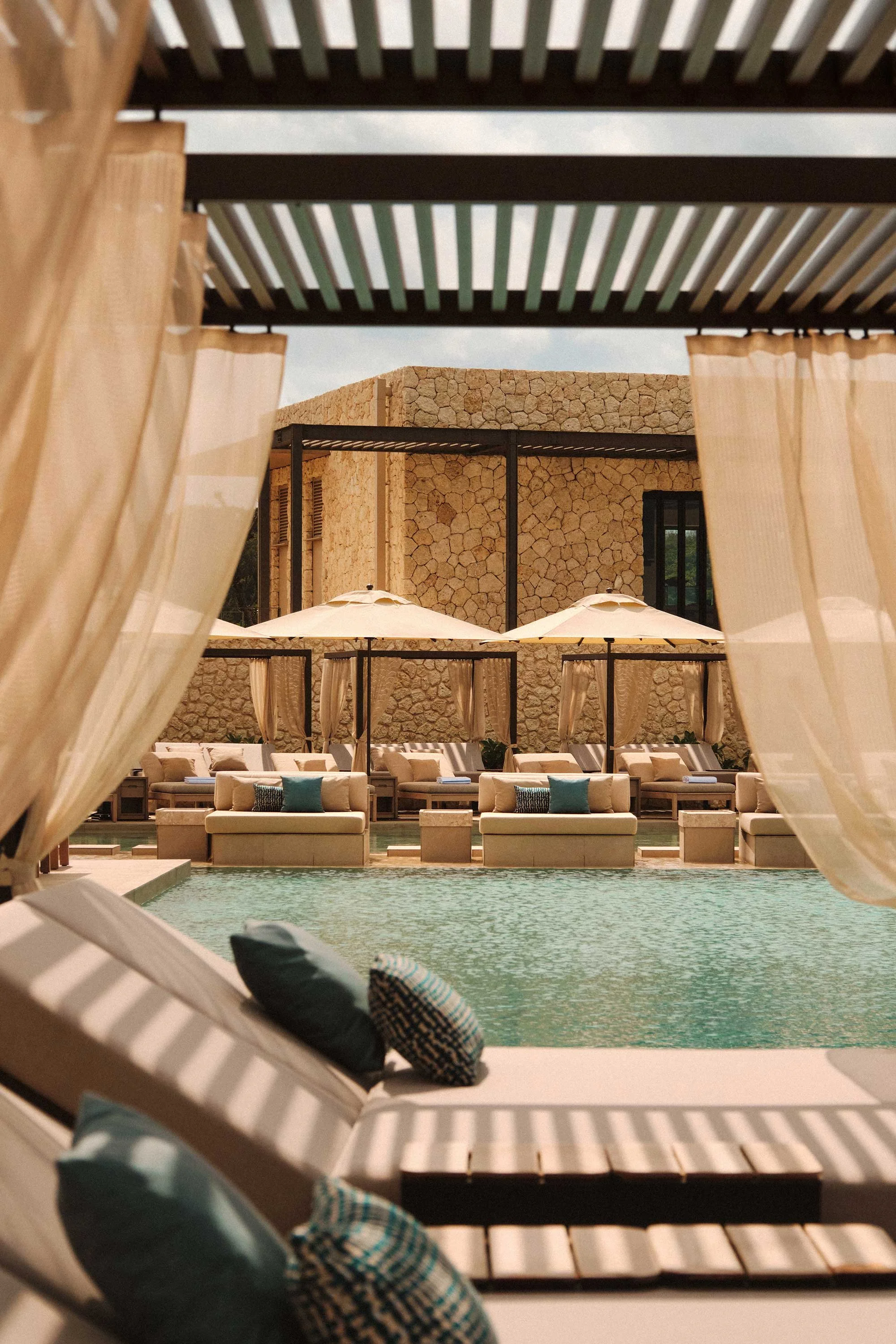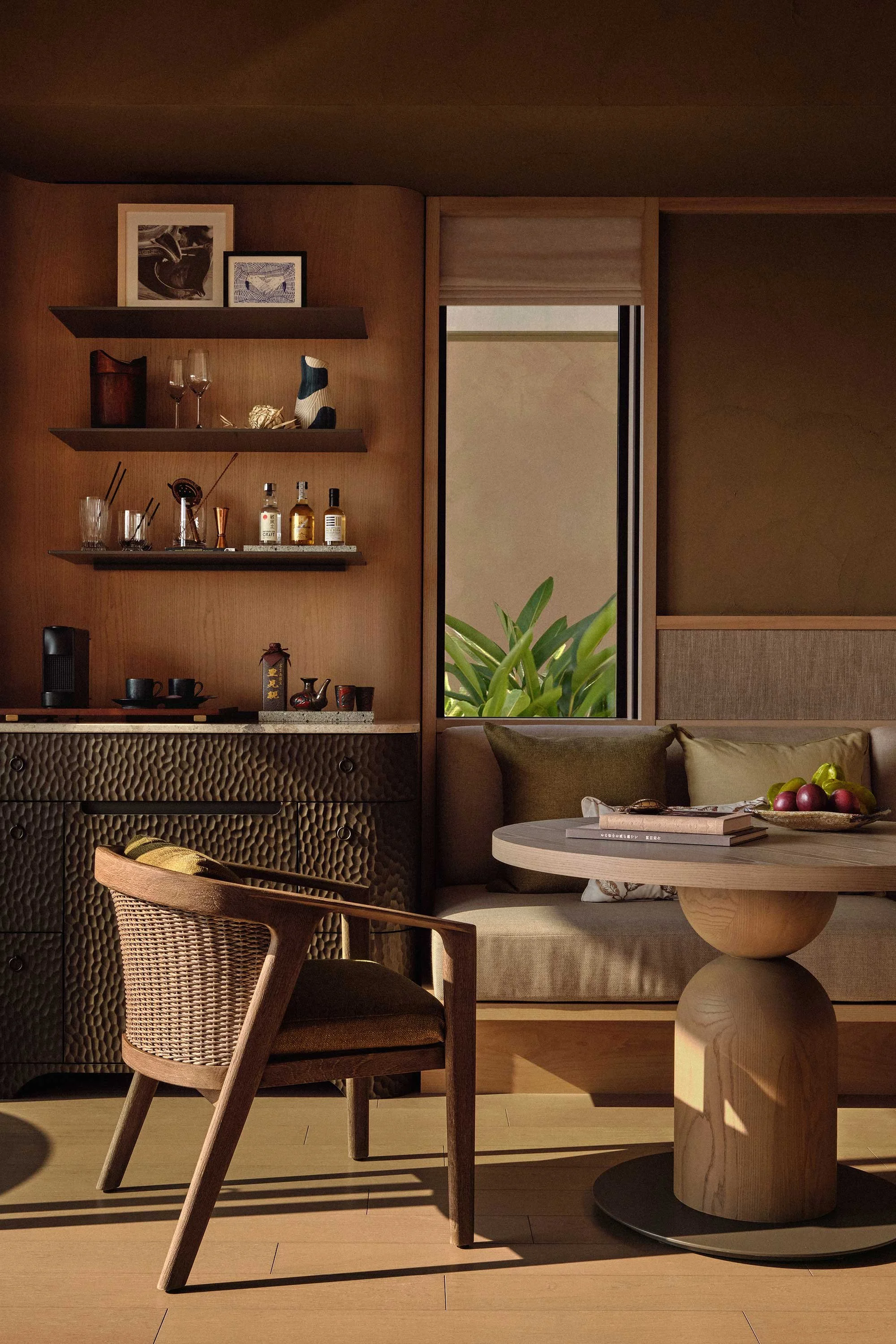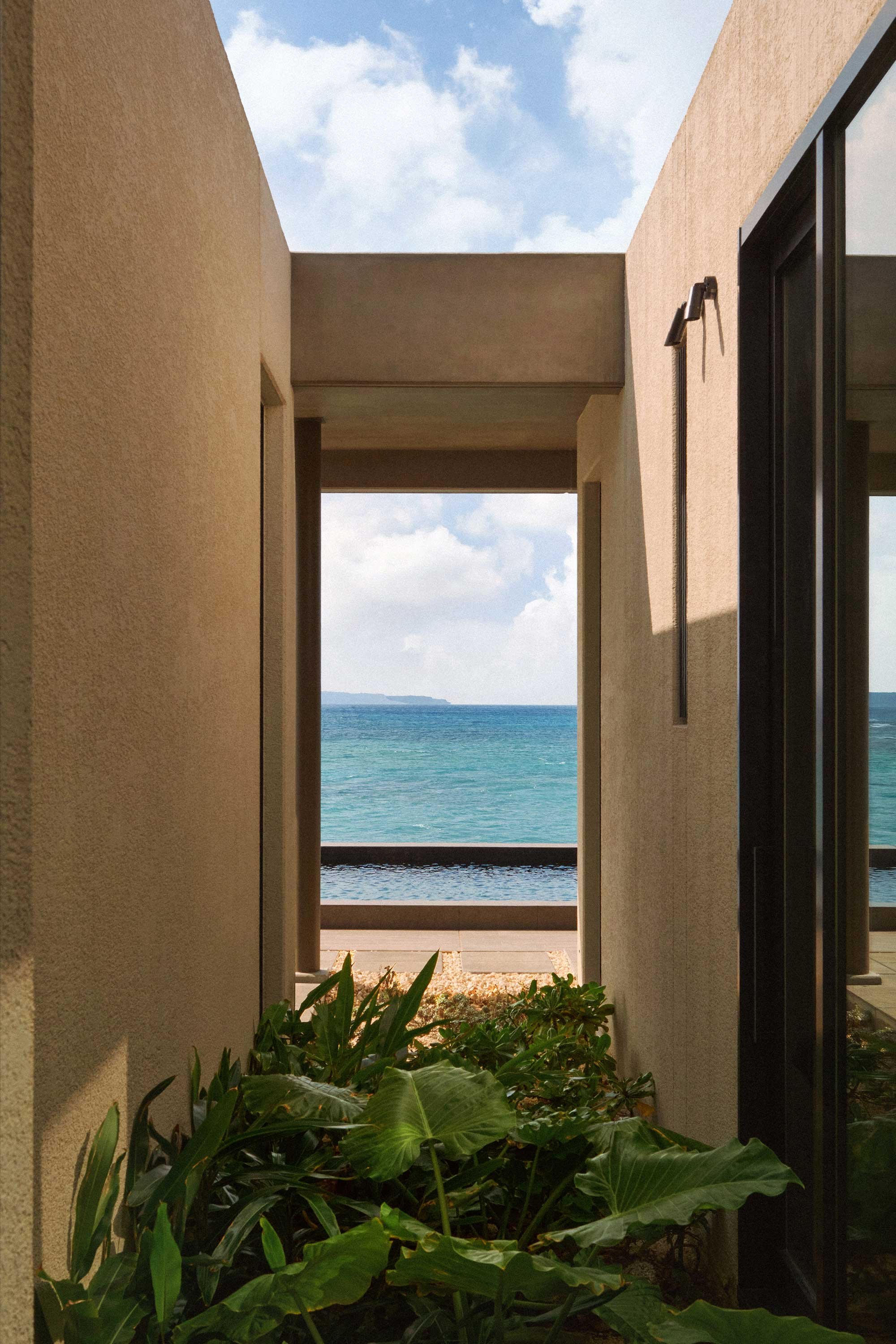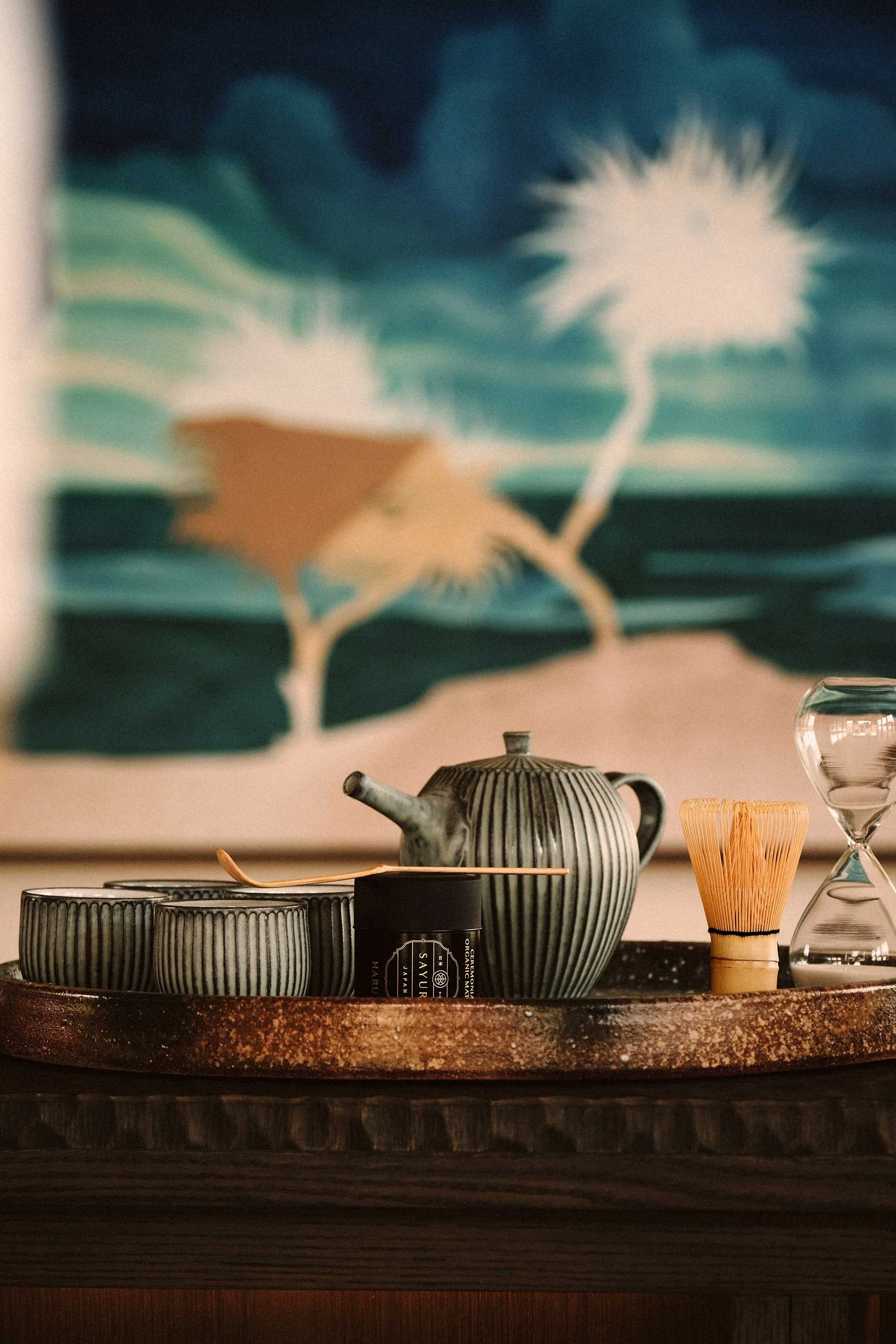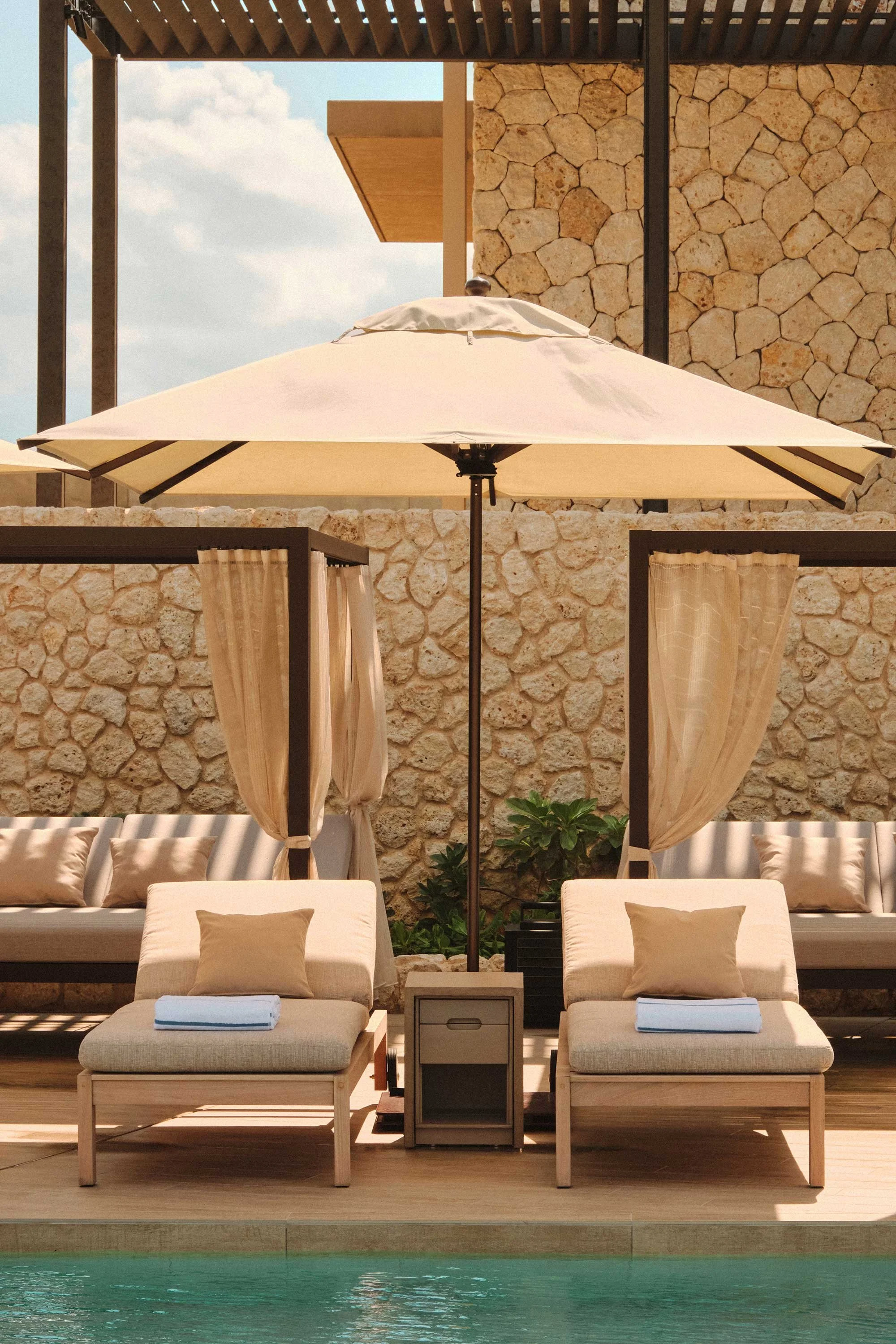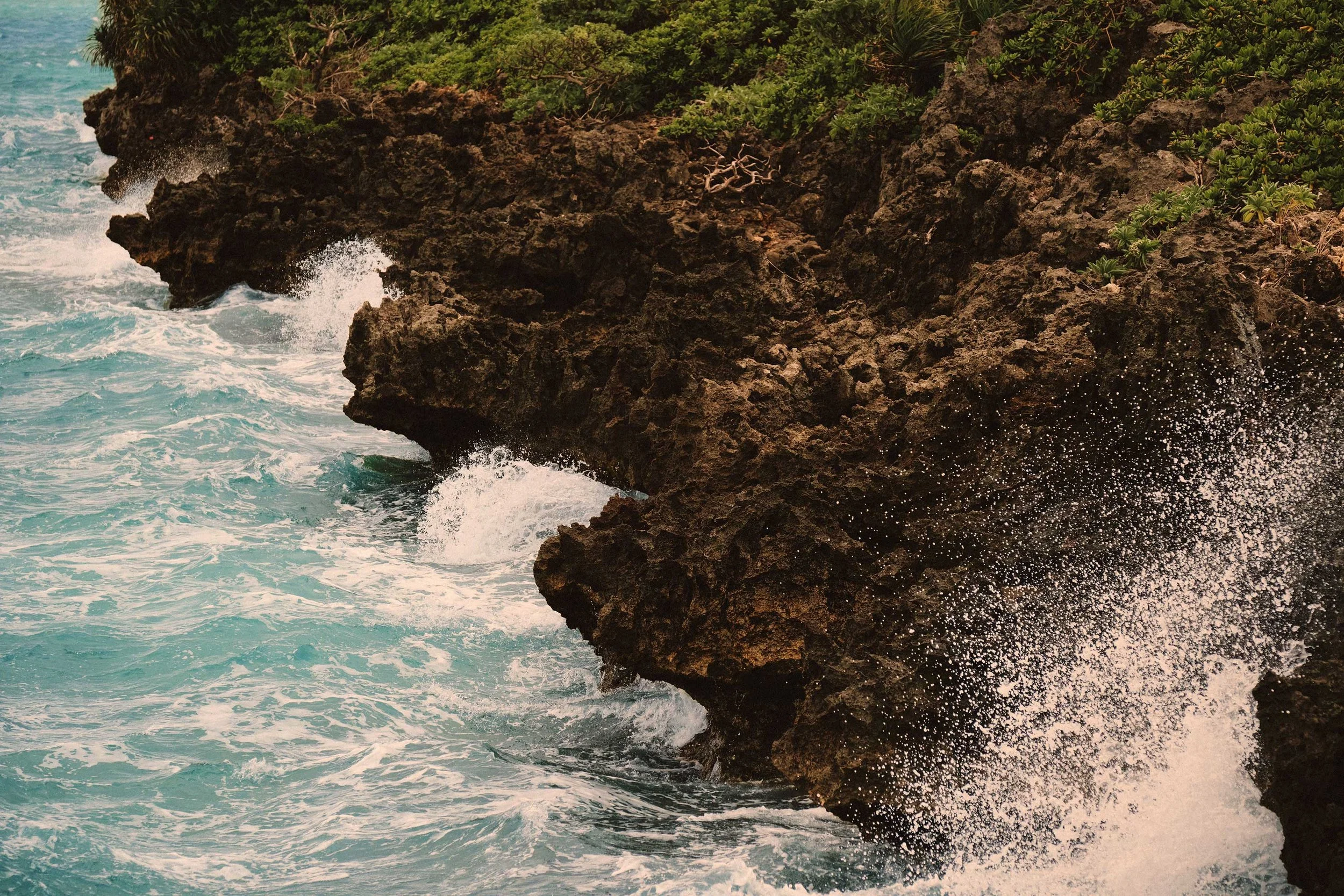Rosewood’s First Japan Resort Finds Home on Okinawan Island
With reverence for its rugged surroundings, Rosewood Miyakojima delivers high-end hospitality to a remote Okinawan island
Vast, verdant fields of sugarcane cover the fourth-largest island in Japan’s Okinawa Prefecture. The pale vegetation sways in the subtropical breeze, making for an immensely serene arrival at Rosewood Miyakojima. Until the 55-key resort’s opening last month, few luxury travellers ventured to Japan’s southernmost archipelago; now a quiet revolution is underway.
The Hong Kong-headquartered group’s first hotel in Japan has been designed in deference to its surroundings. The resort’s architecture, by Dutch firm Studio Piet Boon, embraces the island’s natural beauty with a restrained, sand-toned palette of coral-derived Ryukyu limestone that embeds the property into the rugged landscape. Guests are guided to the chocolate-toned, grooved-concrete guestroom facades by a single glass sconce. Before that, however, they must pass mythical Ryukyuan shisa statues — part lion, part dog — that guard the villa entrances.
Inside, interiors also by Piet Boon reflect an intention for the property to mature gracefully. ‘We try to use materials which age beautifully, so I think in maybe five years, it’ll be even more beautiful when everything is grown in,’ says Boon. Floor-to-ceiling windows frame views of calm oceans, with cargo ships drifting across the horizon and the low-rise sprawl of Miyako city glimmering in the distance.
Layers of wood, granite and rough-hewn walls echo the landscape of the coral island. Bathrooms are richly appointed with bronze sconces, stone basins and charcoal-toned wooden dressers. Villa terraces spill onto private pools, flanked by daybeds and dining tables. ‘We tried to source as locally as possible, such as the stones,’ Boon explains. Expansive native landscaping will slowly enwrap the hotel’s built environment, helping Rosewood Miyakojima realise its aspirations of being at one with its locality.
At the heart of the resort are four restaurants and bars, including local, seasonally inspired Choma (set to open later this year), all-day poolside Italian diner Nagi, pool bar Yukuu; and casual seafood eatery Maas. Nearby, the hotel’s signature Asaya Spa offers six treatment rooms, a yoga studio and a fitness centre, all designed with the same muted material palette. A private pavilion overlooking the ocean offers an idyllic venue for weddings and events, while younger guests are kept entertained — without disrupting the premium environs — at Rosewood Explorers Club.
The logistical realities of operating a resource-intensive resort on a relatively remote island underscore Rosewood’s lofty ambitions, with almost everything needed to keep the hotel running sourced locally. And on-site power generators can keep the entire property functional for up to three days — enough to outlast most typhoons. Villas are designed for extended stays, too, with many having their own well-appointed kitchens. A delayed departure courtesy of a tropical storm is a somewhat tantalising prospect.
Beyond the resort’s landscaped grounds, utaki — spiritual sites important to Ryukyuan culture — are dotted throughout the island. Here, guests can glimpse Miyakojima’s soul, articulated by salt-laden air and the sound of waves meeting the shore. These moments of spirituality offer a rich connection to the land on which Rosewood Miyakojima, offering a deft balance of ruggedness and refinement and making a compelling case for wholehearted immersion.
Text by Jeremy Smart

